📍Poster Hall 3+2B #376 on Fri, Apr 25 at 15:00
🎤Oral in Session 6A on Sat, Apr 26 at 16:30
📰https://arxiv.org/pdf/2407.10490
(12/12)
📍Poster Hall 3+2B #376 on Fri, Apr 25 at 15:00
🎤Oral in Session 6A on Sat, Apr 26 at 16:30
📰https://arxiv.org/pdf/2407.10490
(12/12)
But there’s more coming—
🧠 Many RL + LLM methods (like GRPO) also involve negative gradients.
🎯 And a token-level AKG decomposition is even more suitable for real-world LLMs.
Please stay tuned. 🚀
(11/12)
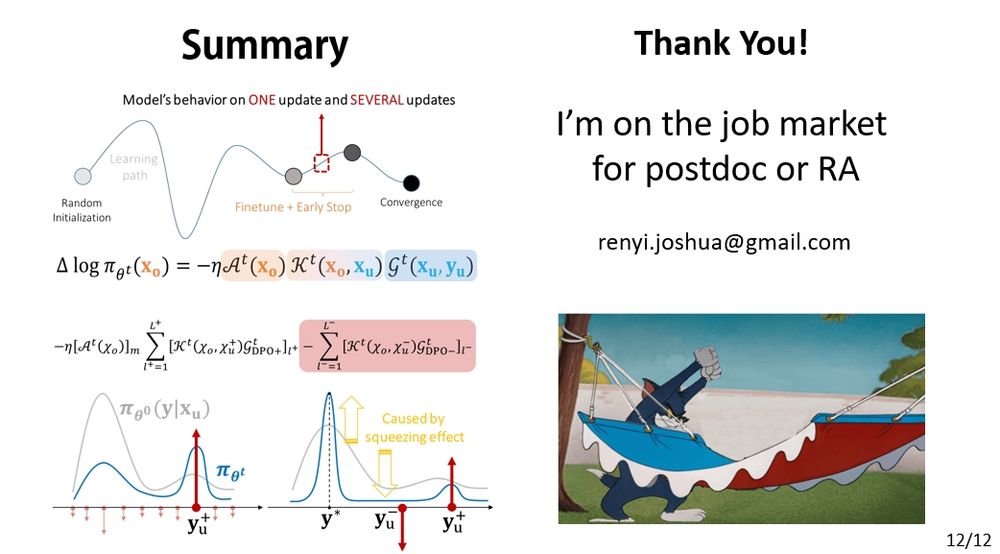
But there’s more coming—
🧠 Many RL + LLM methods (like GRPO) also involve negative gradients.
🎯 And a token-level AKG decomposition is even more suitable for real-world LLMs.
Please stay tuned. 🚀
(11/12)
Just apply force analysis and remember: the smaller p(y-), the stronger the squeezing effect.
(10/12)
Just apply force analysis and remember: the smaller p(y-), the stronger the squeezing effect.
(10/12)
(9/12)
(9/12)
(8/12)

(8/12)
⚖️ The key difference? DPO introduces a negative gradient term — that’s where the twist comes in.
(7/12)
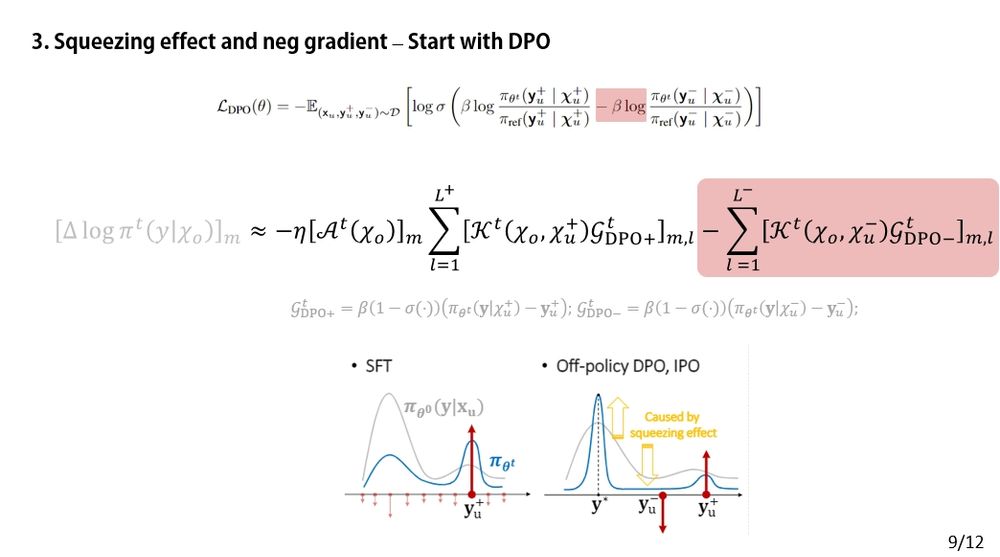
⚖️ The key difference? DPO introduces a negative gradient term — that’s where the twist comes in.
(7/12)
🔍 The model uses facts or phrases from A2 when answering an unrelated Q1.
Why does this happen?
Just do a force analysis — the answer emerges naturally. 💡
(6/12)
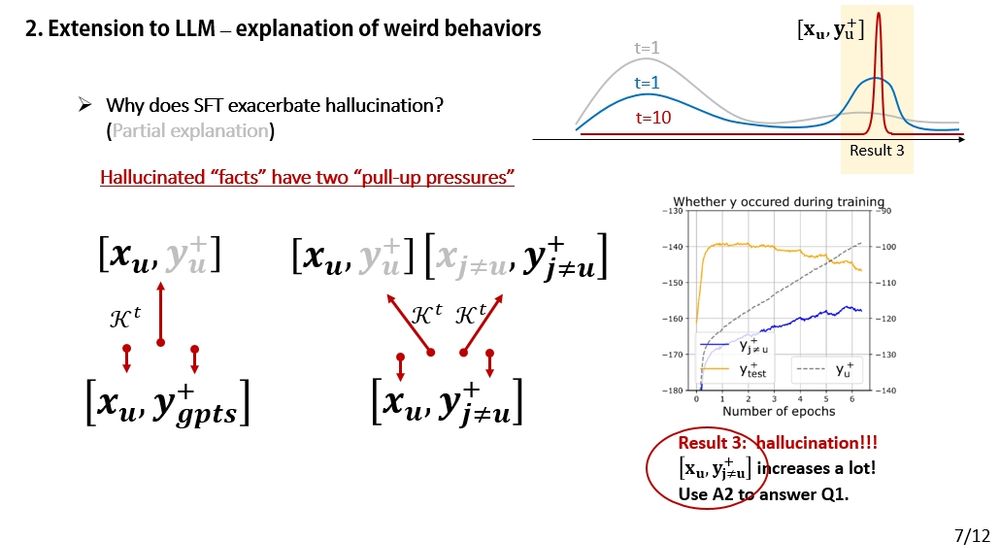
🔍 The model uses facts or phrases from A2 when answering an unrelated Q1.
Why does this happen?
Just do a force analysis — the answer emerges naturally. 💡
(6/12)
📈📉 This aligns well with the force analysis perspective. (More supporting experiments in the paper).
(5/12)
📈📉 This aligns well with the force analysis perspective. (More supporting experiments in the paper).
(5/12)
The change in the model’s prediction can be decomposed (AKG-style). The input is a concatenation: [x; y]. This lets us ask questions like: “How does the model’s confidence in 'y-' change if we fine-tune on 'y+'?”
(4/12)

The change in the model’s prediction can be decomposed (AKG-style). The input is a concatenation: [x; y]. This lets us ask questions like: “How does the model’s confidence in 'y-' change if we fine-tune on 'y+'?”
(4/12)
(3/12)
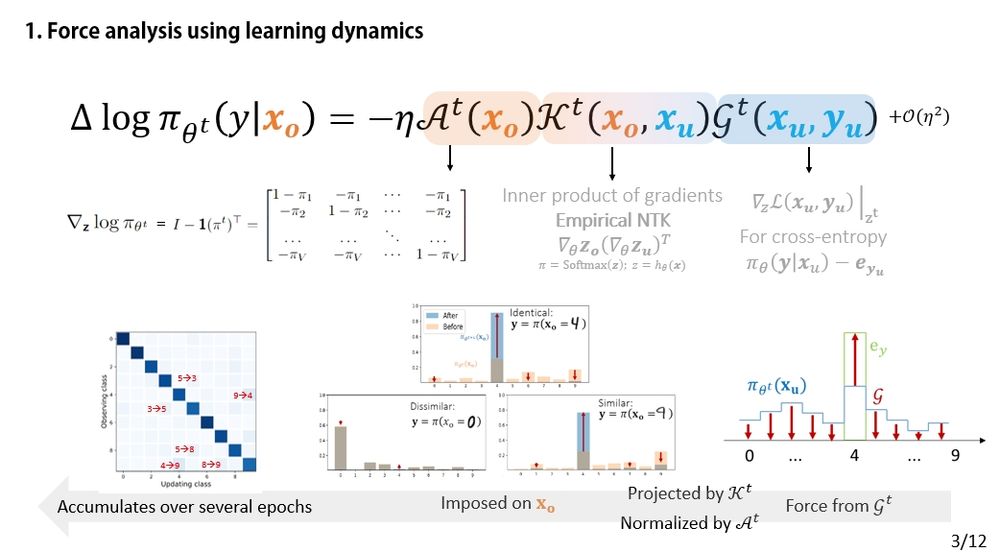
(3/12)
🧠 Think of the model's prediction as an object and each gradient update as a force acting on it.
(2/12)
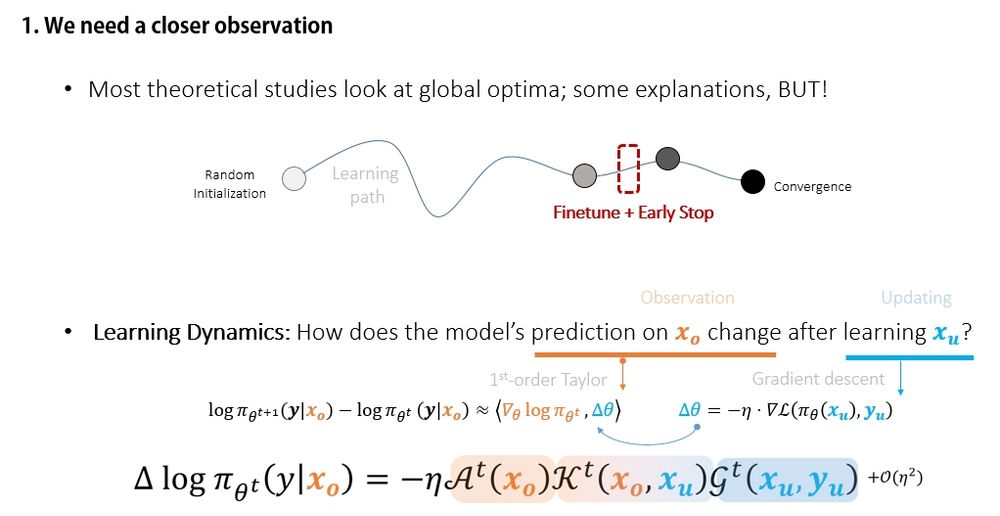
🧠 Think of the model's prediction as an object and each gradient update as a force acting on it.
(2/12)
🧩Prior work offers great insights, but we take a different angle: We dive into the dynamics behind these changes, step by step, like force analysis in physics. ⚙️
(1/12)

🧩Prior work offers great insights, but we take a different angle: We dive into the dynamics behind these changes, step by step, like force analysis in physics. ⚙️
(1/12)
(8/12)

(8/12)
⚖️ The key difference? DPO introduces a negative gradient term — that’s where the twist comes in.
(7/12)

⚖️ The key difference? DPO introduces a negative gradient term — that’s where the twist comes in.
(7/12)
🔍 The model uses facts or phrases from A2 when answering an unrelated Q1.
Why does this happen?
Just do a force analysis — the answer emerges naturally. 💡
(6/12)

🔍 The model uses facts or phrases from A2 when answering an unrelated Q1.
Why does this happen?
Just do a force analysis — the answer emerges naturally. 💡
(6/12)
📈📉 This aligns well with the force analysis perspective. (More supporting experiments in the paper).
(5/12)
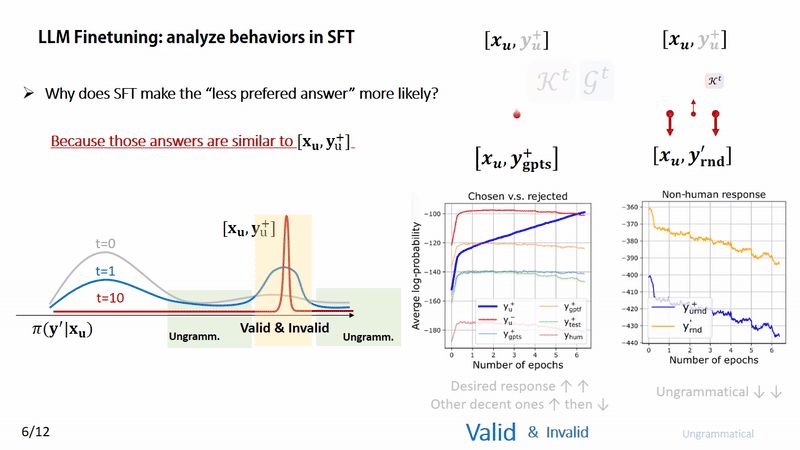
📈📉 This aligns well with the force analysis perspective. (More supporting experiments in the paper).
(5/12)
The change in the model’s prediction can be decomposed (AKG-style). The input is a concatenation: [x; y]. This lets us ask questions like: “How does the model’s confidence in 'y-' change if we fine-tune on 'y+'?”
(4/12)

The change in the model’s prediction can be decomposed (AKG-style). The input is a concatenation: [x; y]. This lets us ask questions like: “How does the model’s confidence in 'y-' change if we fine-tune on 'y+'?”
(4/12)
(3/12)

(3/12)
🧠 Think of the model's prediction as an object and each gradient update as a force acting on it.
(2/12)

🧠 Think of the model's prediction as an object and each gradient update as a force acting on it.
(2/12)
🧩Prior work offers great insights, but we take a different angle: We dive into the dynamics behind these changes, step by step, like force analysis in physics. ⚙️
(1/12)

🧩Prior work offers great insights, but we take a different angle: We dive into the dynamics behind these changes, step by step, like force analysis in physics. ⚙️
(1/12)

